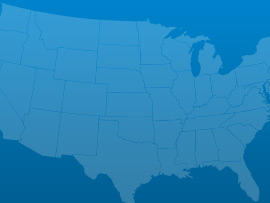Alabama is home to diverse, reliable and affordable energy resources and produces more electricity per person than most states to power homes and businesses. Alabama is a heavy manufacturing state with the largest energy consumption sector being industrial users at 44% of total energy use. Today, the primary fuel for electricity generation in Alabama is natural gas, followed by coal and nuclear, then hydroelectric and other renewables. Alabama’s extensive network of rivers and forests provide for economical
hydroelectric power and biomass. In fact, Alabama ranks highly in the U.S. in renewable energy sources, most of which is generated by hydroelectric dams. Energy providers in Alabama are ready to meet the state’s reliability challenges and the future energy needs. In order to continue providing safe, reliable and affordable energy, Alabama must continue to support research to maintain a diverse fuel mix and low energy cost, improve energy transmission and distribution infrastructure, promote development of new energy technologies, and implement cyber security measures for reliability and safety.
 Aviation
Aviation Bridges
Bridges Dams
Dams Drinking Water
Drinking Water Energy
Energy Inland Waterways
Inland Waterways Rail
Rail Roads
Roads Transit
Transit Waste & Storm Water
Waste & Storm WaterA: Exceptional, B: Good, C: Mediocre, D: Poor, F: Failing, ?: Incomplete
Each category was evaluated on the basis of capacity, condition, funding, future need, operation and maintenance, public safety, resilience, and innovation
Aviation
75 public-use airports
Bridges
1,405 of the 16,078 bridges are structurally deficient
Bridges
$62.80 million in bridge funds came from the Federal Highway Bridge Fund in 2011
Drinking Water
$7.9 billion in drinking water infrastructure needs over the next 20 years
Energy
11.081 gigawatt-hours of renewable energy every year, ranking it 6th
Hazardous Waste
14 sites on the National Priorities List
Inland Waterways
1,270 miles of inland waterways, ranking it 6th nationally
Levees
17 miles of levees
Ports
69.5 million short tons of cargo in 2012, ranking it 12th nationally
Public Parks
$68.9 million of unmet needs for its parks system
Rail
24 freight railroads covering 3,254 miles across the state, ranking 17th nationally by mileage
Roads
$1.2 billion a year in costs to motorists from driving on roads in need of repair, which is $321 /yr per motorist
Roads
10,401 of the state’s 101,811 public roads are major roads, and 6% are in poor condition
Schools
$5.1 billion in estimated school infrastructure funding needs
Transit
6.6 million annual unlinked passenger trips via transit systems including bus, transit, and commuter trains
Wastewater
$4.4 billion in wastewater infrastructure needs over the next 20 years

March 03, 2017
As the President’s repeated in his address to Congress his pledge to dramatically increase infrastructure spending to the tune of $1 trillion, various Congressional Committees

March 01, 2017
On Tuesday night, President Trump addressed a joint-session of Congress for the first time in his presidency. Infrastructure was among the many issues he discussed.

February 28, 2017
U.S. motorists set a new record for vehicle miles travelled (VMT) in 2016, driving over 3.2 trillion miles, an increase of 70 billion miles from

February 17, 2017
Romantic dates, the Grammy awards and celebrating black history are not the only milestones of this week; the Oroville dam crisis in California and the